Does your dog have a lump on its tail? There is no need for immediate panic. A lump on dogs’ tail is a common occurrence. There are numerous types of lumps in both small and large breeds.
Usually, dog lumps are benign growths mostly related to older dogs. However, young dogs can develop them, too. This type of bump, or lump, can be diagnosed by FNA (Fine Needle Aspirate) or biopsy depending on the size of your dog’s lump.
Benign growths are easily treated, and their removal usually takes a couple of days to heal. However, malignant lumps on a dog’s body demand an immediate vet exam and treatment.
If you are a first-time dog owner, and you’re not quite sure what a lump on your dog’s tail could be – the best thing you can do is subject your pet to a preventive vet exam. A timely reaction is key in these kinds of situations.
What A Lump On Dogs’ Tail Represents
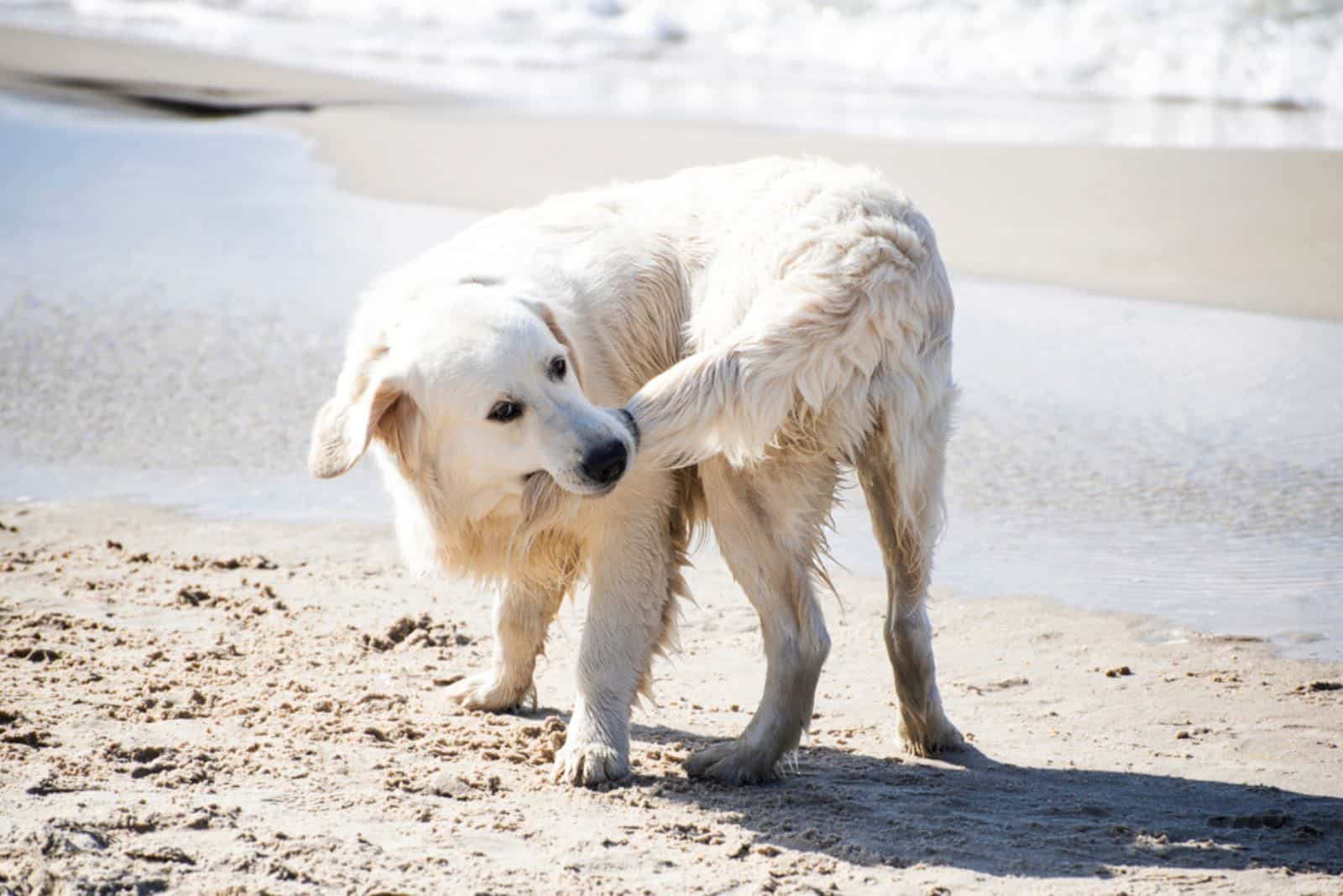
There is a plethora of explanations for a lump on dog’s tail. Small lumps can be caused by flea bites, sun exposure, obesity, or some sort of skin irritation. In these cases, lumps and bumps are generally benign, and their removal is easy.
These types of lumps are easily detected by the Fine Needle Aspirate test, which is done by putting a small needle into your puppy’s lump. This way, a vet can detect the type of lump and administer proper treatment.
Unfortunately, some lumps are not that harmless. They can represent skin cancer, which is definitely the worst case scenario. Skin cancers are generally detected by a biopsy test, which is more invasive and more expensive, too.
Lumps can appear anywhere on your dog’s body – on the dog’s legs, tail, back, or stomach. This is a common phenomenon for all dog breeds, including Terriers, Bullies, Poodles, and Retrievers. Even the healthiest dog breeds can face growing lumps.
Most lumps are slow-growing, which gives you time to act timely.
1. Sebaceous Cyst
Sebaceous cysts appear on both fat and skinny dog breeds. This is a common phenomenon in dogs. Even though it can be unpleasant, or painful at times, these skin cysts are benign. They usually appear inside hair follicles. This is a condition of fat cells clumping anywhere on the dog’s body.
Follicular cysts can appear overnight. They are generally developed from blocked oil glands. Blocked sebaceous glands are a common cause for cyst development.
The treatment of this unpleasant phenomenon can be done with antibiotics as sebaceous cysts sometimes have an inflammatory impact on your puppy’s skin.
Bigger cysts can be removed surgically.
Sebaceous cysts can appear as a result of injury or infection. In order to stop the infection from spreading, visit a vet as soon as you notice a lump on your dog’s tail.
A vet will easily detect a sebaceous cyst with the Fine Needle Aspirate test.
2. Lipomas
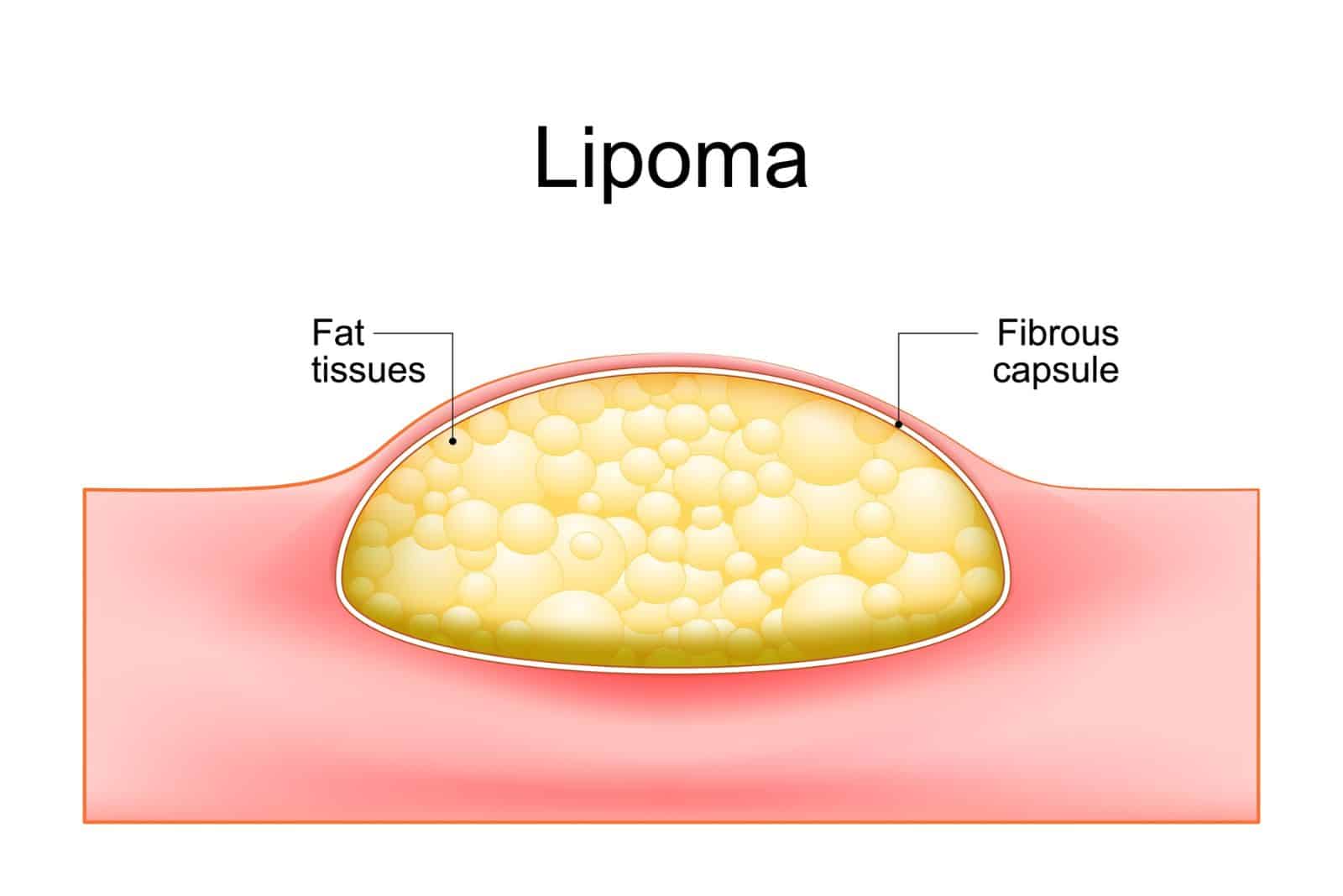
Lipoma is one of the most common types of lumps on a dog’s tail. It is a benign tumor that usually does not represent a harmful condition to your puppy’s health. However, the best thing you can do is remove the lipoma surgically.
If a tumor is manifested in a small lump, surgery won’t be invasive and unbearable. Your puppy will recover within a few days. However, big lipomas can cause severe pain, especially if they appear on a sensitive part of your dog’s body.
These tumors generally appear in older dogs. However, there are no clear causes for this occurrence. Most lipomas are hereditary, and they develop as a result of genetic deformation.
The most common lipomas resemble a phenomenon of crusty scabs on dogs. They are unpleasant, but harmless. However, untreated lipomas can have severe repercussions as they can spread and get bigger. In some cases, lipomas disable a dog from moving properly, which can be a big problem.
3. Warts
Dog warts are another benign occurrence that can cause a lump on dogs’ tail. These lumps are cauliflower in shape, and they generally don’t require a surgical procedure or any kind of treatment. The immune system of your dog will take care of everything.
This harmless phenomenon is also known as papilloma. It is caused by papillomavirus, which is exclusively related to dogs. This means that other pets and humans will not be affected.
However, the good thing would be to subject your dog to early vaccination, and keep your puppy away from other dogs in dog parks, or anywhere outside. Papillomavirus spreads easily.
In some cases, warts can be a painful condition. They can appear inside your dog’s mouth, which causes difficulty with breathing and swallowing.
Also, big lumps caused by papillomavirus can make running and even walking very difficult.
In order to boost your puppy’s immune system, make sure you come up with a healthy, well-organized feeding chart. Avoid the worst dog foods available on the market, as well as unhealthy treats. Additionally, make sure your puppy gets vitamin supplements, as well as regular vet exams.
4. Minor Benign Tumors
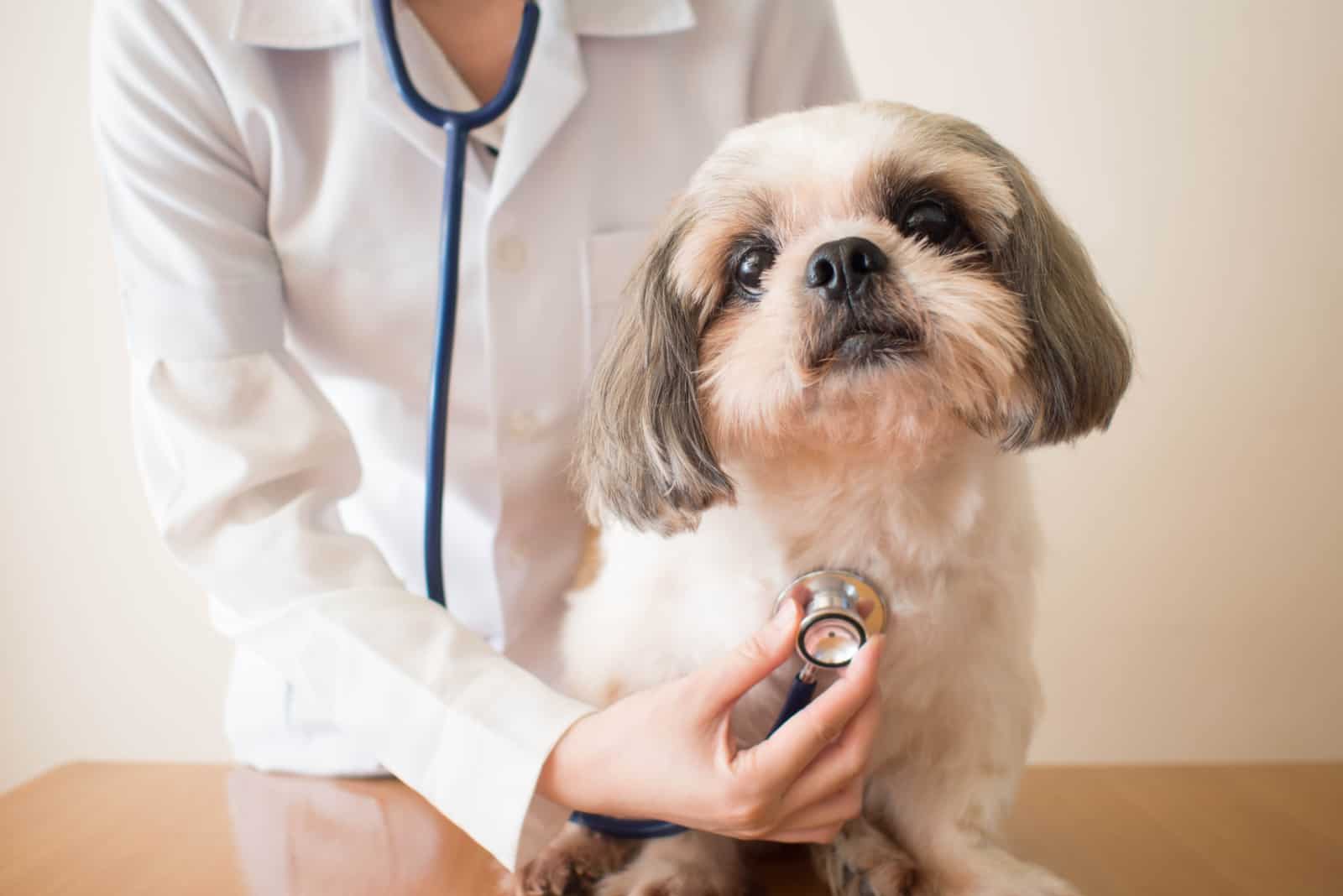
Aside from lipomas, there are several other benign skin tumors that could be the reason for your dog’s skin irregularities and a lump on your dog’s tail. Some tumors appear as blisters and they are hardly detected by an untrained eye.
That’s why a regular vet visit is highly recommended if you notice any skin irregularity on your dog.
Aside from lipomas, or histiocytomas, which are pretty common in dogs, other benign tumors can be acrochordon and sebaceous adenomas. The latter has a pink color, and it usually doesn’t create any sort of discomfort for your dog.
However, big adenomas can create an infection or inflammation.
On the other hand, acrochordons are the same color as healthy skin, and they generally appear in older dogs. They are, however, generally more related to Cocker Spaniels than to other dog breeds. Using suitable brushes for Cocker Spaniels can help you detect an acrochordon faster.
This tumour is more common in obese dogs. That’s why it is quite important to keep your puppies within their recommended weight.
5. Abscess
Abscesses in dogs appear as either small or big lumps on a dog’s tail or other parts of its body. They can be caused by several things, among which a dog bite and infection are two of the most common. Abscesses are characterized as acute redness, and they demand timely treatment.
An abscess is skin swelling, and it can be extremely painful. Untreated abscesses can lead to major infection, which is why it is important to subject your puppy to vet treatment as soon as you notice an abscess.
The treatment process usually implies antibiotics. Also, any vet will advise a dog owner to take care of his puppy’s feeding. An abscess requires healthy nutrition and a low-processed carb intake.
Treating abscesses that appear on the skin is quite easy. However, an abscess inside the body can cause certain complications, and it is likely that your puppy will have a fever.
6. Malign Skin Cancer

Skin cancer is probably the worst case scenario, and the deadliest reason for a lump on dogs’ tail. There are cancers, such as mast cell tumors and melanoma that could be detected by biopsy.
Mast cell tumors are extremely dangerous as they spread easily and affect other parts of the body. There are no clear causes for this invasive tumor. However, there are some large dog breeds that are more prone to this disease, such as some Terrier dog breeds. Bull Terriers, for instance.
This skin cancer can be detected via FNA (Fine Needle Aspirate). However, a biopsy is recommended for more aggressive types of this tumor.
On the other hand, melanoma is probably one of the worst and deadliest types of skin cancer. A change in a mole or a lump is the most obvious symptom of this cancer.
There are some factors that increase the risk of melanoma. Sun exposure, for example! If your puppy belongs to a group of dogs that have a risk of developing melanoma – avoid sun exposure as much as you can! Sun burns can have severe repercussions.
This skin cancer is treated with surgery. Unfortunately, this is usually a deadly cancer that dogs cannot heal from.
7. Pimple
Pimples in dogs occur as a result of dead skin cells and oily secretion of the sebaceous glands mixing together. Reasons why your puppy has pimples are mostly genetics, feeding habits, some sort of allergies, or dog trauma.
There are several dog breeds that are prone to pimples: Boxers, Dobermans, Rottweilers, and Bulldogs. So, if you have a Boxer, the advice is to take care of your Boxer’s feeding chart as the excessive usage of unprocessed carbs, or some other unhealthy foods, can cause pimples.
Generally, pimples are not painful. However, inflammation and constant scratching could cause swelling and painful pimples. Try to distract your puppy from scratching pimples as much as you can.
Take a veterinarian’s advice on which dog shampoos you can use. Plant-based dog shampoos are a good option if your puppy is dealing with pimples.
Also, the usage of medical ointments is generally applicable to pimple treatment.
8. Histiocytoma
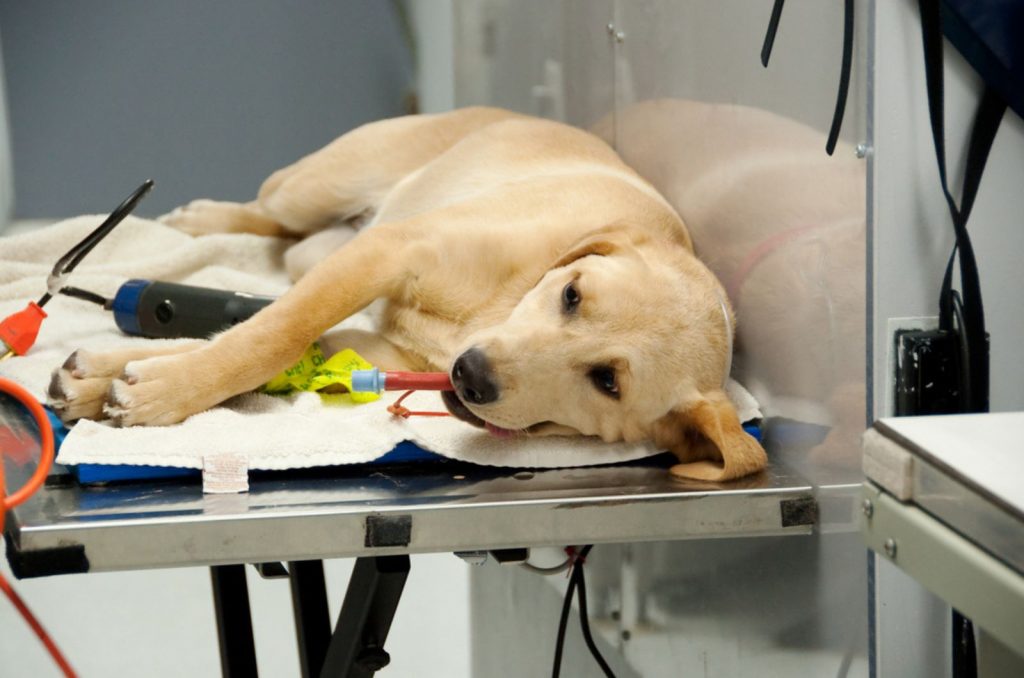
Histiocytoma is another reason for a lump on dogs’ tail. These skin lumps represent small skin growths that take two to four weeks to fully develop. This condition is mostly common in young dogs.
A dog breed prone to this benign tumor is the Dachshund puppy. The best Dachshund breeders will subject newborn Dachshund puppies to DNA tests, and they will make sure that they are free of disease. The advice is to always pay extra attention when choosing a Dachshund breeder.
However, this issue is usually not as harmless as other benign tumors. It goes away after several weeks. Sometimes, surgery is needed. Histiocytoma surgery is a standard procedure, after which your puppy will heal within a couple of weeks.
These lumps are generally not painful. A dog that suffers from histiocytoma won’t display any symptoms at all. In long-coated puppies, you may not even notice histiocytoma.
However, the recommendation is to groom your puppy on a regular basis. Grooming can help you detect unusual skin growths, which can be severe. Timely treatment and reaction is usually the best way to save your dog from a major health condition.
9. Soft Tissue Sarcoma
Soft Tissue Sarcomas in dogs appear on nervous or muscle tissues, and they represent a common skin tumor for all dog breeds. The reason why soft tissue sarcomas appear is unknown. However, research shows that reasons for developing these tumors are mostly either hereditary or genetics-related.
The most obvious symptoms of soft tissue sarcoma tumors are swelling, a big growing mass on the skin, pain, bad breath, vomiting, or inability to move.
These are progressive tumors that, in some cases, can cause severe pain to your puppy.
Due to enormous swelling on the skin, puppies are sometimes disabled from walking, running, and jumping. If soft tissue sarcoma develops inside the stomach, there is a pretty good chance that your puppy will experience nausea or vomiting.
This is an invasive type of tumor that is treated surgically. However, chemotherapy is sometimes an option. Timely treated soft tissue sarcoma tumors are curable. On the other hand, this is a tumor that has deadly repercussions once it spreads to other parts of the body.
Detecting an unusual lump on dogs’ tail, or anywhere on its body, requires a timely vet reaction. Sometimes, this is the only way to help your puppy as some skin growths are hardly curable. Here, we talk mostly about skin cancers, among which melanoma is the deadliest.
Subjecting your dog to regular vet checkups means being a responsible dog owner.
What Is FNA (Fine Needle Aspiration)?
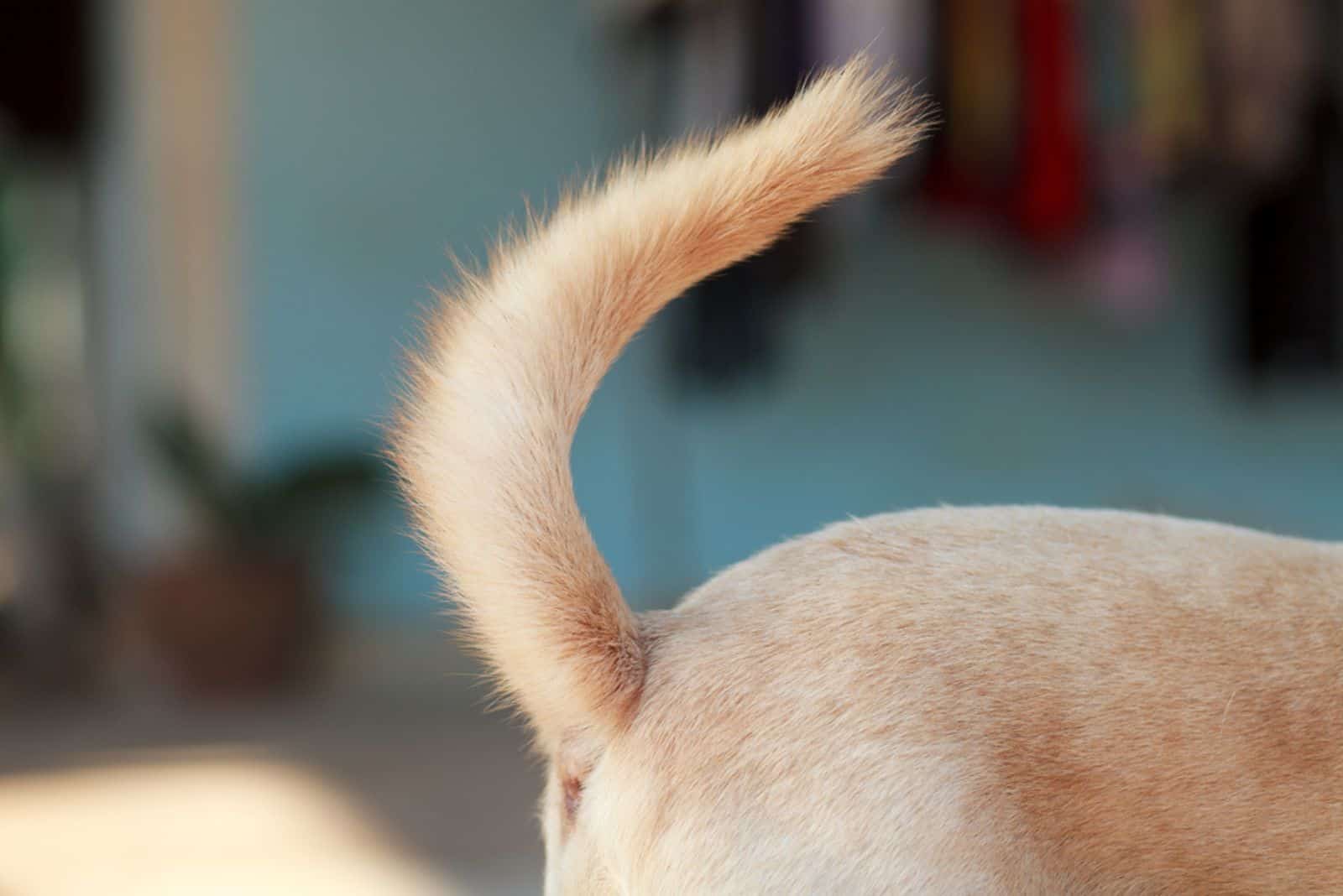
Fine Needle Aspiration (FNA) is typically a less-invasive method for detecting the nature of lumps and bumps on your dog’s tail or other parts of its body.
However, the FNA method does not only detect the origin of skin growths. It also serves as a way of examining the state of the liver, kidneys, and lungs. Fine Needle Aspiration can also help detect some abnormalities inside the urinary tract, chest, and stomach.
This is a widely used vet procedure that is done with a small needle. However, this method is not always diagnostic as in some cases, it cannot detect the type of tumor or cancer a dog is dealing with.
That’s why biopsy is recommended for aggressive types of tumors. However, biopsy is a far more invasive method. Generally, sedatives are needed to perform biopsy in dogs.
Even though there are some types of skin growths and skin tumors that you can’t prevent – you can always try some home remedies for keeping your puppy healthy.
For instance, non-prescription dog food for urinary health, vitamins, healthy food supplements, or some other methods are generally a good option.
However, even the healthiest dog breeds will sometimes need the Fine Needle Aspiration procedure done as they might suffer from different skin abnormalities. Skin lumps are not always preventable. Most of the time, they are related to genetics.
FAQs

1. How Is A Lump On A Dog’s Tail Diagnosed?
A lump on your puppy’s tail can be diagnosed by a simple vet exam. Lumps and bumps are generally seen even by the untrained eye. A good thing is to act quickly. As soon as you notice some sort of skin abnormality on your canine – visit a vet.
On the other hand, there are several ways to detect the origin of a lump on dogs’ tail, or on some other part of the dog’s body.
The first method is Fine Needle Aspirate. This is a broadly-used method to detect the root of a lump on your puppy’s body. Fine Needle Aspirate is used in detecting skin tumors and skin cancers.
The other method is biopsy. This is a far more invasive method for detecting skin cancers. It requires sedation (anesthesia).
Using X-rays is also a common medical procedure in detecting lumps on dogs. Treatment options will be based on the diagnosis that your vet formulates.
Lumps generally have little to do with a dog’s lifestyle. However, it is always good to use healthy foods, such as healthy bone broths for dogs, foods rich with vitamins and minerals, as well as foods rich with omega 3.
2. What Are The Symptoms Of Cancer In Dogs?
Not all dog cancers have the same symptoms. However, if we talk about skin cancer that could manifest as a progressive lump on dogs’ tail, we can expect several common symptoms.
The first is swelling and redness. This is a common symptom for skin cancers and skin tumors. Depending on the size, swelling can be either big or small.
Another symptom is inflammation. Many skin irregularities cause skin infections that result in inflammation, high temperature, or even fever.
Progressed skin cancers also have these following symptoms: vomiting, nausea, lack of appetite, lack of energy, disinterest in any sort of activity, decreased mobility, stomachache, severe pain in the affected area, and many others.
Unusual dog behavior, such as sleeping under the bed, or avoiding human company can indicate that something’s wrong with your puppy.
Skin cancers, such as melanoma and mast cell tumors have deadly repercussions most of the time. They are hardly curable, and most dog owners subject their puppies to treatment in the later phases of these cancers.
3. What Is The Average Size Of A Tumor In Dogs?
There is no written rule on how big a tumor can get.
Generally, skin tumors are somewhere between 0.3 to 2 inches big. However, some tumors can reach up to 4 inches.
The tumor size depends on the type of tumor. Minor, benign tumors are generally not invasive, and they are small. This is because they don’t progress to other parts of the body.
For instance, papilloma, or warts, can reach up to 1.5 inches, which is quite big. Even though this is a benign tumor that doesn’t have severe repercussions in most cases, the tumor can get pretty big.
On the other hand, some invasive, malignant tumors can be pretty big, too as they spread rapidly.
However, the important thing to know is that the size of a tumor doesn’t positively correlate with the invasiveness of a tumor.
Conclusion
A lump on dogs’ tail generally represents a harmless skin abnormality that is easily treated.
However, there might be cases when lumps and bumps represent a severe skin condition, such as skin cancer.
The important thing is to subject your puppy to regular vet exams, as well as to check its skin during a grooming session.
Timely reaction can save your dog and prevent skin abnormalities and infection from becoming bigger.
Read more: Is It Safe To Use Sudocrem On Dogs? All Benefits & Threats













